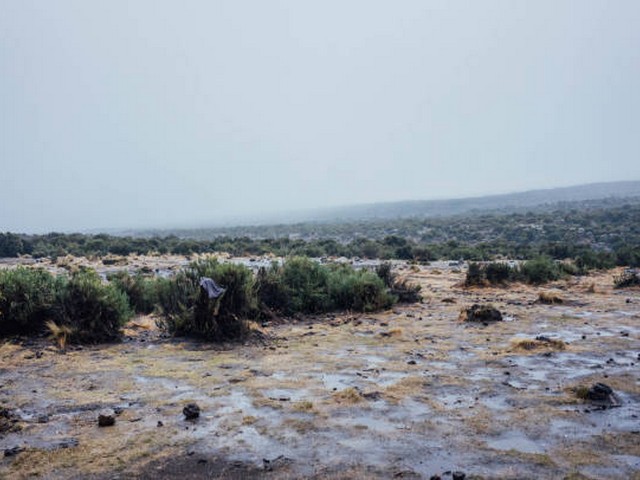Kilimanjaro Trekking and Local Folklore: A Journey Through Myth and Mountain with KCTE
Mount Kilimanjaro is not only a towering giant that beckons trekkers from around the globe; it’s a storied peak, rich with local folklore and cultural significance. At the Kilimanjaro Centre for Trekking and Ecotourism (KCTE), we blend the thrill of ascent with the magic of Tanzanian narratives, offering an experience that is as enriching to the spirit as it is to the body. Join us as we explore the intertwined paths of Kilimanjaro trekking and local folklore, unveiling the cultural tapestry that makes this mountain uniquely captivating.
The Spiritual Essence of Kilimanjaro: More Than Just a Trek
Kilimanjaro is revered by the local Chagga people and other indigenous groups as a sacred place, often referred to as the "House of God." The mountain’s snow-capped peak, towering above the clouds, is believed to be a dwelling place for the spirits. As you embark on your trek with KCTE, you’re not just climbing a mountain; you’re walking through a living storybook, filled with tales of gods, spirits, and ancient wisdom.
Legends Woven into the Landscape
One of the most enchanting aspects of Kilimanjaro is its ability to tell stories through its diverse landscapes. From the lush rainforests that cloak its lower slopes to the stark beauty of its alpine desert and the icy grandeur of its summit, every ecological zone on Kilimanjaro holds its own folklore. Our guides, well-versed in local legends, enrich your journey by sharing stories that have been passed down through generations. Imagine listening to the tale of the "Leopard King" under the canopy of giant heathers or hearing about the "Moon Goddess" as you gaze at the starlit sky from Shira Plateau.
Following the Footsteps of Giants: The Routes of Legends
Choosing Your Path
At KCTE, we offer several routes to the summit, each with its own unique narrative. Whether you choose the popular Machame Route, the scenic Lemosho Route, or the challenging Umbwe Route, our guides integrate the local myths associated with these paths into your trekking experience.
Machame Route: The Whistling Thorns
The Machame Route, known as the "Whiskey Route," is famed not only for its majestic views but also for its "whistling" thorn trees. According to local folklore, these trees are said to whisper secrets of the mountain to those who listen carefully, especially during the windy evenings.
Lemosho Route: The Trail of the Ancient Warriors
Embarking on the Lemosho Route, you tread a path believed to be used by ancient Chagga warriors. Stories of their bravery and encounters with mystical creatures of the mountain come alive as you cross the Shira Plateau, where battles were once fought.
Umbwe Route: The Hidden Spirits
The Umbwe Route, the steepest and most direct way to the summit, is shrouded in tales of hidden spirits guarding the mountain. It’s a path less traveled, but rich with stories of protective deities that ensure only the worthy reach the peak.
The Cultural Heartbeat: Visiting Local Villages
To truly connect with the spirit of Kilimanjaro, a visit to the surrounding local villages is a must. KCTE organizes cultural tours where you can interact with the Chagga people, listen to their music, participate in their dances, and learn about their traditional ways of life. This cultural immersion adds a profound depth to your trekking adventure, turning it into a holistic journey that celebrates not only the physical ascent but also the ascent of understanding and respect for local traditions.
Sustainability and Respect: Trekking with a Conscience
At KCTE, we are deeply committed to preserving both the natural environment of Kilimanjaro and its cultural heritage. Our trekking practices are designed to minimize environmental impact and to promote the well-being of local communities. By choosing to trek with us, you contribute to sustainable tourism efforts that ensure the mountain remains a source of wonder for generations to come.
Join Us: Embark on Your Kilimanjaro Adventure
Are you ready to explore the majestic heights of Kilimanjaro and delve into the heart of Tanzanian folklore? Kilimanjaro Centre for Trekking and Ecotourism (KCTE) invites you to join us on this remarkable journey. Book your Kilimanjaro climbing adventure today and experience the thrill of the climb, the warmth of the local culture, and the magic of ancient stories. Let us guide you to the top of Africa, where every step tells a story.
FAQs: Kilimanjaro Trekking and Local Folklore
Q: What is the best time of year to trek Kilimanjaro?
A: The best times to climb Kilimanjaro are during the dry seasons: January to mid-March and June to October. These months offer the clearest skies and safest trekking conditions.
Q: How fit do I need to be to climb Kilimanjaro?
A: Climbing Kilimanjaro is a physically demanding endeavor that requires a good level of fitness. However, people of various ages and fitness levels have successfully reached the summit. We recommend starting a training regimen several months before your trip.
Q: What should I bring for my Kilimanjaro trek?
A: Essential items include sturdy hiking boots, thermal clothing, rain gear, a sleeping bag suitable for low temperatures, sun protection, and a hydration pack. Once you book with KCTE, we will provide a detailed packing list.
Q: How does KCTE support local communities?
A: KCTE employs local guides and staff, sources supplies locally whenever possible, and contributes to community initiatives that help improve living standards and preserve cultural heritage.
Embark on a journey like no other, where every step up the mighty slopes of Kilimanjaro brings you closer not just to the sky but to the heart and soul of Tanzania. Book your trek with Kilimanjaro Centre for Trekking and Ecotourism (KCTE) today and be part of a story that you will cherish forever.




